Potřebujeme váš souhlas k využití jednotlivých dat, aby se vám mimo jiné mohly ukazovat informace týkající se vašich zájmů. Souhlas udělíte kliknutím na tlačítko „OK“.
ASTM D4739-11
Standard Test Method for Base Number Determination by Potentiometric Hydrochloric Acid Titration
Automaticky přeložený název:
Standardní zkušební metoda pro základní počet stanovení potenciometrickou Kyselina chlorovodíková titrace
NORMA vydána dne 15.5.2011
Informace o normě:
Označení normy: ASTM D4739-11
Poznámka: NEPLATNÁ
Datum vydání normy: 15.5.2011
Kód zboží: NS-28379
Počet stran: 8
Přibližná hmotnost: 24 g (0.05 liber)
Země: Americká technická norma
Kategorie: Technické normy ASTM
Kategorie - podobné normy:
Anotace textu normy ASTM D4739-11 :
Keywords:
base number, lubricants, petroleum products, potentiometric titration: Used petroleum products, Acidity, alkalinity, pH--petroleum products, Chloroform, Fuel oils, Isopropyl alcohol, Lubricants (fluid), Lubricating oils, Oxidation testing--petroleum products, Petroleum additives, Potentiometric titration, Strong base number, Toluene--petroleum products, ICS Number Code 71.040.40 (Chemical analysis)
Doplňující informace
| Significance and Use | ||||||||||||||||
|
New and used petroleum products can contain basic constituents that are present as additives. The relative amount of these materials can be determined by titration with acids. The base number is a measure of the amount of basic substances in the oil always under the conditions of the test. It is sometimes used as a measure of lubricant degradation in service. However, any condemning limit shall be empirically established. 5.2 As stated in 1.2, this test method uses a weaker acid to titrate the base than Test Method D2896, and the titration solvents are also different. Test Method D2896 uses a stronger acid and a more polar solvent system than Test Method D4739. As a result, Test Method D2896 will titrate salts of weak acids (soaps), basic salts of polyacidic bases, and weak alkaline salts of some metals. They do not protect the oil from acidic components due to the degradation of the oil. This test method may produce a falsely exaggerated base number. Test Method D4739 will probably not titrate these weak bases but, if so, will titrate them to a lesser degree of completion. It measures only the basic components of the additive package that neutralizes acids. On the other hand, if the additive package contains weak basic components that do not play a role in neutralizing the acidic components of the degrading oil, then the Test Method D4739 result may be falsely understated. 5.3 Particular care is required in the interpretation of the base number of new and used lubricants. 5.3.1 When the base number of the new oil is required as an expression of its manufactured quality, Test Method D2896 is preferred, since it is known to titrate weak bases that this test method may or may not titrate reliably. 5.3.2 When the base number of in-service or at-term oil is required, this test method is preferred because in many cases, especially for internal combustion engine oils, weakly basic degradation products are possible. Test Method D2896 will titrate these, thus giving a false value of essential basicity. This test method may or may not titrate these weak acids. 5.3.3 When the loss of base number value, as the oils proceed in service, is the consideration, this test method is to be preferred and all values including the unused oil shall be determined by this test method. Base numbers obtained by this test method shall not be related to base numbers obtained by another test method such as Test Method D2896. 5.3.4 In ASTM Interlaboratory Crosscheck Programs for both new and used lubricants, historically Test Method D2896 gives a higher value for base number. |
||||||||||||||||
| 1. Scope | ||||||||||||||||
|
1.1 This test method covers a procedure for the determination of basic constituents in petroleum products and new and used lubricants. This test method resolves these constituents into groups having weak-base and strong-base ionization properties, provided the dissociation constants of the more strongly basic compounds are at least 1000 times than that of the next weaker groups. This test method covers base numbers up to 250. 1.2 In new and used lubricants, the constituents that can be considered to have basic properties are primarily organic and inorganic bases, including amino compounds. This test method uses hydrochloric acid as the titrant, whereas Test Method D2896 uses perchloric acid as the titrant. This test method may or may not titrate these weak bases and, if so, it will titrate them to a lesser degree of completion; some additives such as inhibitors or detergents may show basic characteristics. 1.3 When testing used engine lubricants, it should be recognized that certain weak bases are the result of the service rather than having been built into the oil. This test method can be used to indicate relative changes that occur in oil during use under oxidizing or other service conditions regardless of the color or other properties of the resulting oil. The values obtained, however, are intended to be compared with the other values obtained by this test method only; base numbers obtained by this test method are not intended to be equal to values by other test methods. Although the analysis is made under closely specified conditions, this test method is not intended to, and does not, result in reported basic properties that can be used under all service conditions to predict performance of an oil; for example, no overall relationship is known between bearing corrosion or the control of corrosive wear in the engine and base number. 1.4 This test method was developed as an alternative for the former base number portion of Test Method D664 (last published in Test Method D664–81). 1.4.1 Colorimetric test methods for base number are Test Method D974, IP 139, and 5102.1 on acid and base number by extraction (color-indicator titration) of Federal Test Method Standard No. 791b. Test results by these methods may or may not be numerically equivalent to this test method. 1.5 The values stated in SI units are to be regarded as standard. No other units of measurement are included in this standard. 1.6 This standard does not purport to address all of the safety concerns, if any, associated with its use. It is the responsibility of the user of this standard to establish appropriate safety and health practices and determine the applicability of regulatory limitations prior to use. |
||||||||||||||||
| 2. Referenced Documents | ||||||||||||||||
|
Podobné normy:
Historická
15.5.2011
Historická
1.10.2010
Historická
1.6.2006
Historická
1.6.2013
Historická
1.2.2006
Historická
1.10.2012
Doporučujeme:
Aktualizace zákonů
Chcete mít jistotu o platnosti užívaných předpisů?
Nabízíme Vám řešení, abyste mohli používat stále platné (aktuální) legislativní předpisy.
Chcete vědět více informací? Podívejte se na tuto stránku.


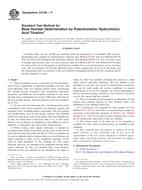
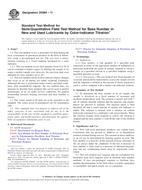 ASTM D5984-11
ASTM D5984-11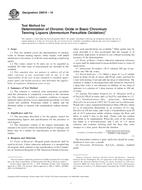 ASTM D6019-10
ASTM D6019-10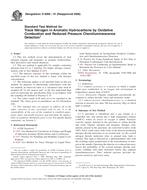 ASTM D6069-01(2006)..
ASTM D6069-01(2006).. ASTM D6143-13
ASTM D6143-13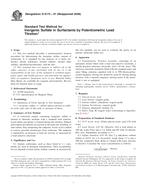 ASTM D6174-01(2006)..
ASTM D6174-01(2006)..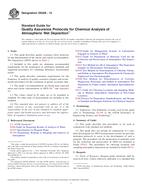 ASTM D6328-12
ASTM D6328-12
 Cookies
Cookies
